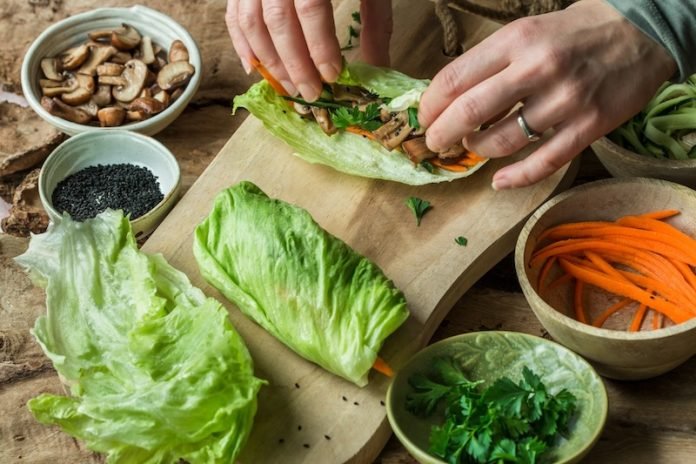
If your New Year’s resolution was to cut down on salt and sugar in your diet, you may have an unexpected ally: your taste buds.
Research, and personal anecdotes, suggest that taste buds might adapt themselves to help us enjoy lower levels of salt and sugar and make it easier to eat healthier.
“The message is one of hopeful curiosity,” said Dr. Danielle Reed, chief science officer at the Monell Chemical Senses Center in Philadelphia. The center conducts research on the senses of taste and smell.
“You may be one of those people that if you reduce salt and sugar, you may end up in a place where you don’t want it as much.”
The key could be right there on your tongue. Its bumps, called papillae, contain collections of cells that detect various tastes, including sweet, salty, bitter and sour.
There are between 50 and 150 taste receptor cells in one taste bud, and the average adult has between 2,000 and 10,000 taste buds – a total that shrinks as people age.
Taste buds generate new taste receptors about every 10 days, prompting the notion that they can be retrained to make us happier with a healthier diet.
“Just like all our cells turn over, your taste buds are replaced,” said Dr. Maya Vadiveloo, associate professor of nutrition at the University of Rhode Island in Kingston and principal investigator at its Big Data and Eating Decisions Lab.
“There’s different signaling that happens as your body gets used to a different taste,” she said. “Over time, your body adapts to accepting lower sugar or lower salt, and you’ll get the same signal that ‘this tastes good’ or ‘this is the right balance of flavors,’ as you did before when it was higher.”
Although Reed cautions that “nothing in this world is true for everybody all the time,” some scientific studies have bolstered the premise.
A small preliminary study presented at a European Society of Cardiology conference in 2022 indicated that people with high blood pressure who understood the importance of reducing salt intake and consumed less of it still enjoyed their food.
A 2016 study in the American Journal of Clinical Nutrition showed that people on a reduced-sugar diet eventually perceived a low-sugar pudding as sweeter than did people who hadn’t changed their eating habits.
The researchers called that “empirical evidence that changes in consumption of simple sugars influence perceived sweet taste intensity.”
The reasons to make these dietary changes are clear. People in the U.S. consume an average of about 3,400 milligrams of sodium daily, according to federal dietary guidelines.
That’s more than double the ideal limit of 1,500 mg for most adults recommended by the American Heart Association. Too much salt means too much sodium, which is linked to high blood pressure, stroke, heart failure, kidney disease and other conditions.
Likewise, U.S. adults eat an average of 17 teaspoons of added sugar each day, nearly twice the AHA recommendation for men (9 teaspoons) and almost three times the recommendation for women (6 teaspoons). Too much added sugar can contribute to obesity, Type 2 diabetes, heart disease and other health problems.
To start making changes, Vadiveloo said, think gradual.
“New Year’s resolutions are often absolute – ‘I’m never eating any added sugar all year,'” she said. “That’s not realistic nor an enjoyable lifestyle. If you’re constantly finding yourself having to use willpower to achieve your goal, we know that’s usually not sustainable.”
Check food labels, she advised, and you’ll probably be surprised at some sources of added sugar, from yogurt to spaghetti sauce to granola bars.
Look for options with less added sugar, limit portions, and go easy on the obvious sugar bombs – sodas, cookies, candy and other sweets.
Most of our excess sodium, Vadiveloo said, comes from packaged, processed and restaurant foods, not the saltshaker. The more people cook at home, she said, the more they can control what they’re eating and discover more options with less salt.
“Use other spices to bring out flavor,” she said. “Spices are your friend.”
Even small reductions in salt and sugar, Vadiveloo said, can lead to better habits in the long term.
“People start to feel better,” she said. “They start to feel more energy and it becomes self-reinforcing. Your taste buds and your body physiology work together to help you feel better, while still leaving room for occasionally indulging in a sweet treat.”
Reed believes the evidence is stronger that taste buds adapt to lower salt than to lower sugar, but said more research is needed in both areas, including with non-sugar sweeteners.
Regardless of the science, she said, “it’s a fun experiment to do on yourself, and you might get an important change for the better.”
Written by Michael Precker.
If you care about diabetes, please read studies about Vitamin D and type 2 diabetes, and to people with diabetes, some fruits are better than others.
For more information about diabetes, please see recent studies that low calorie diets may help reverse diabetes, and 5 vitamins that may prevent complication in diabetes.



